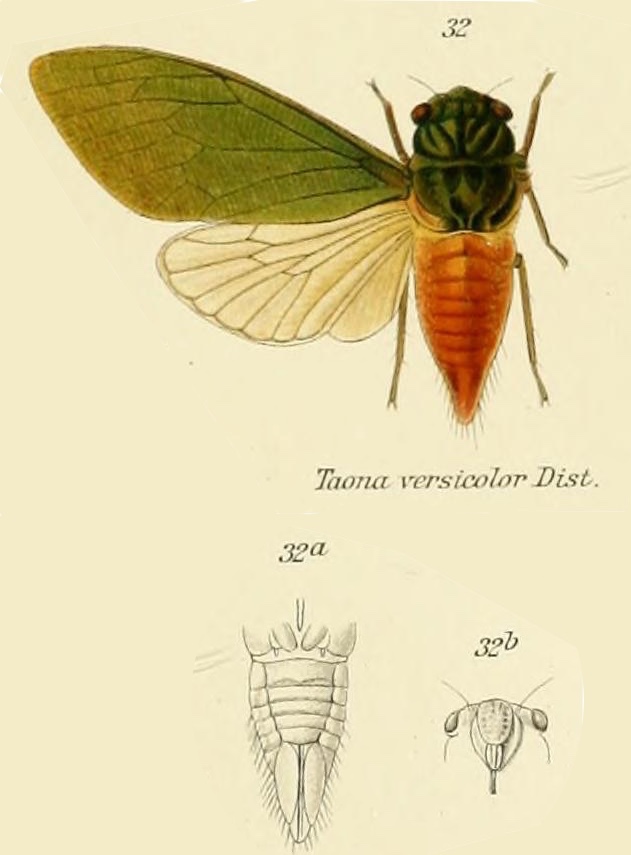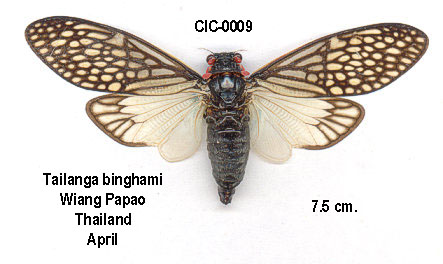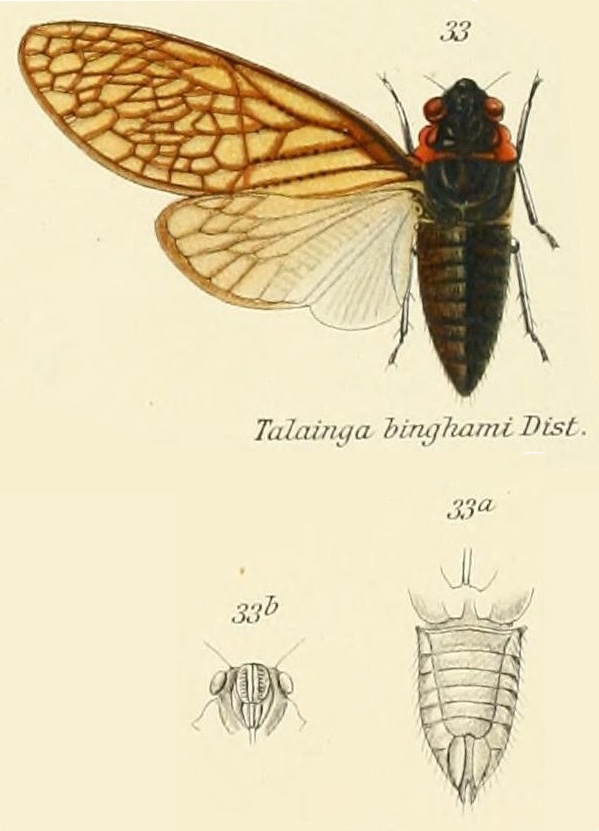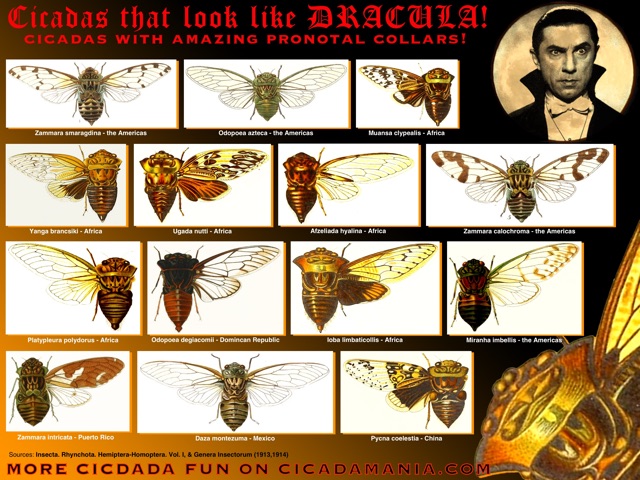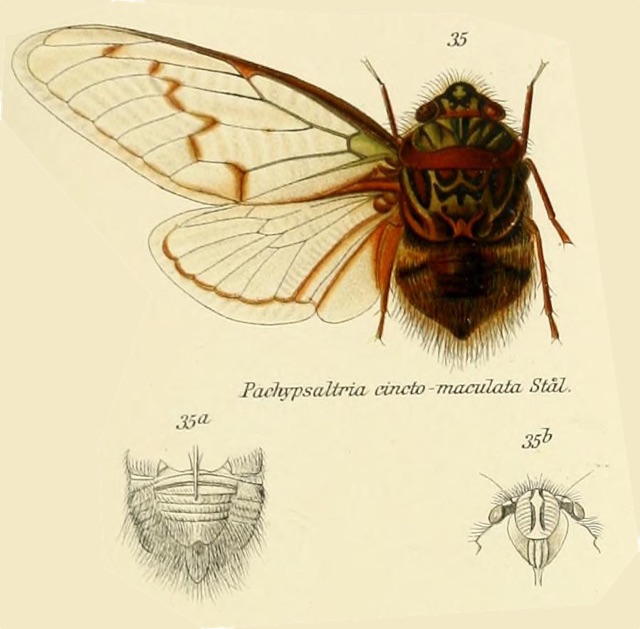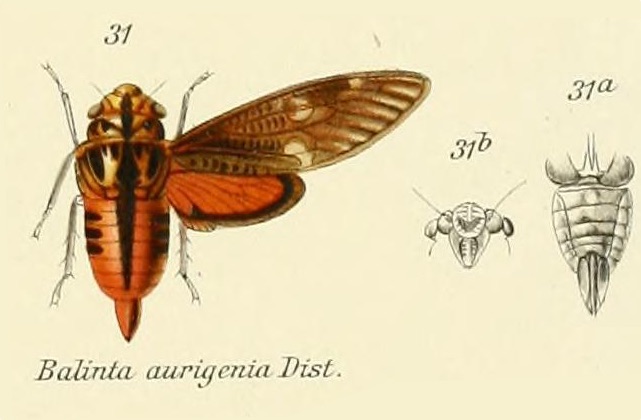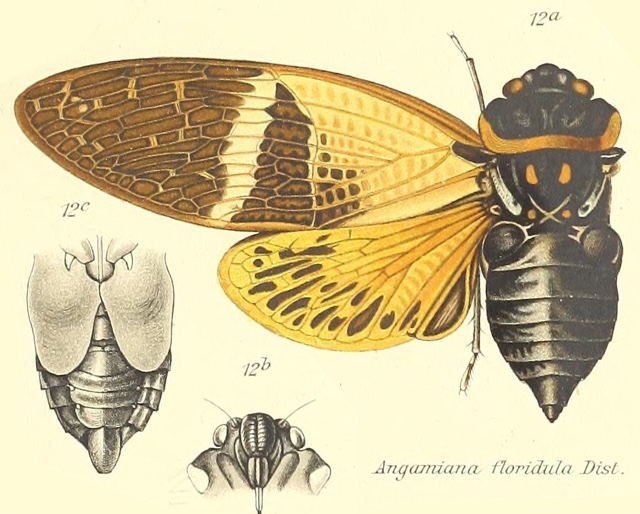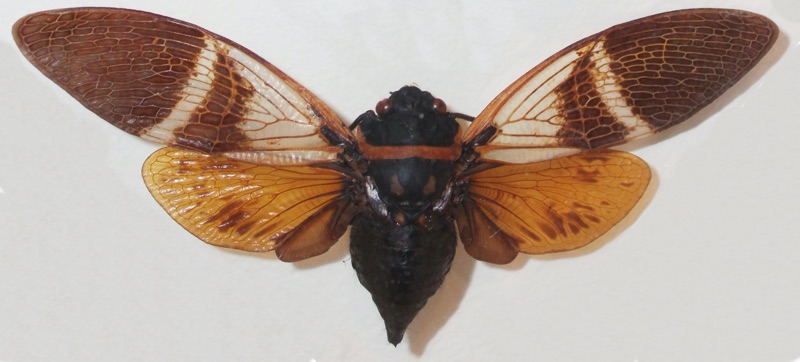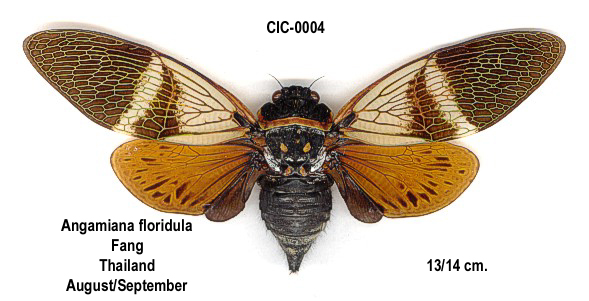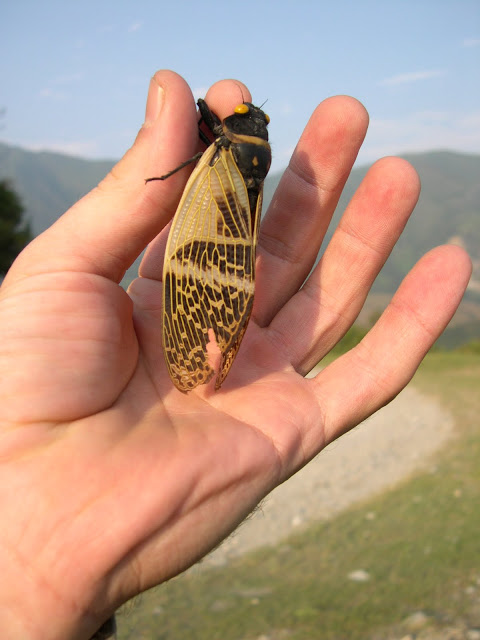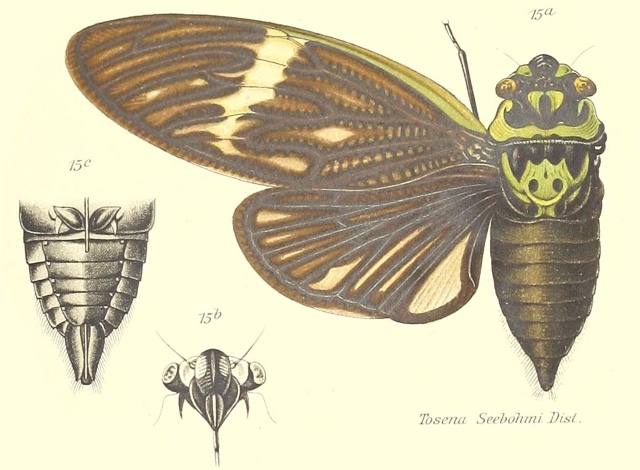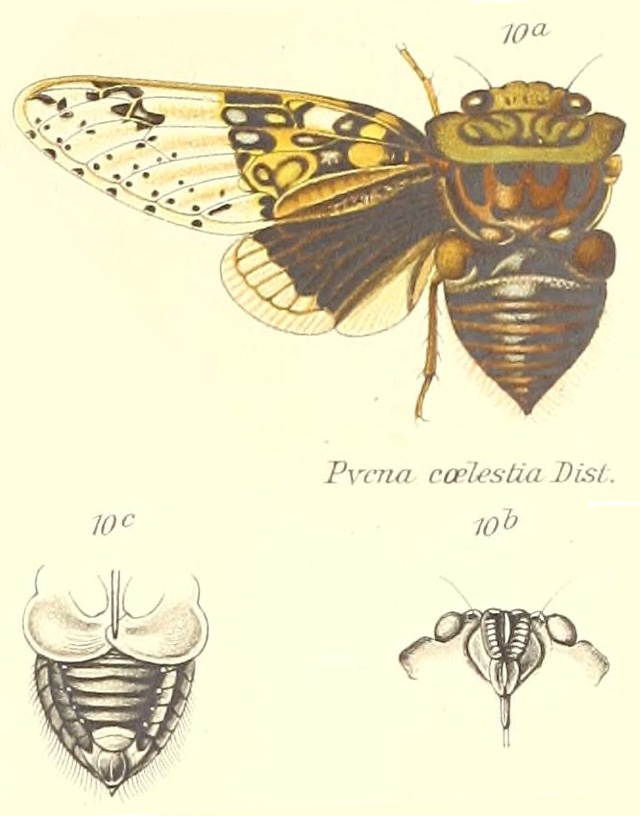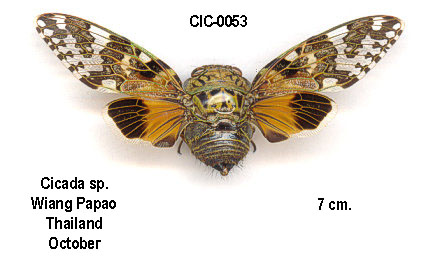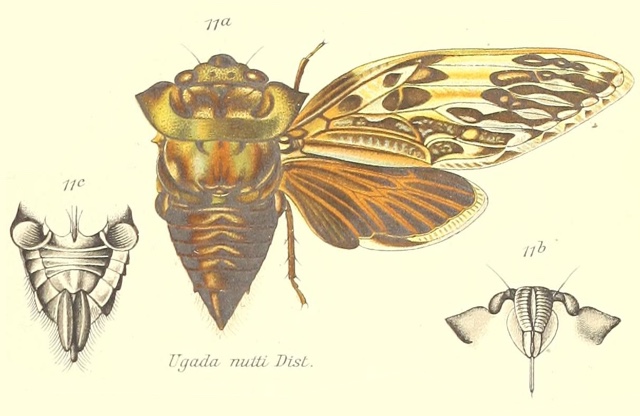Tugelana butleri Distant, 1912, is found in South Africa.
Scientific classification:
Family: Cicadidae
Subfamily: Cicadinae
Tribe: Platypleurini
Genus: Tugelana
Species: Tugelana butleri Distant, 1912
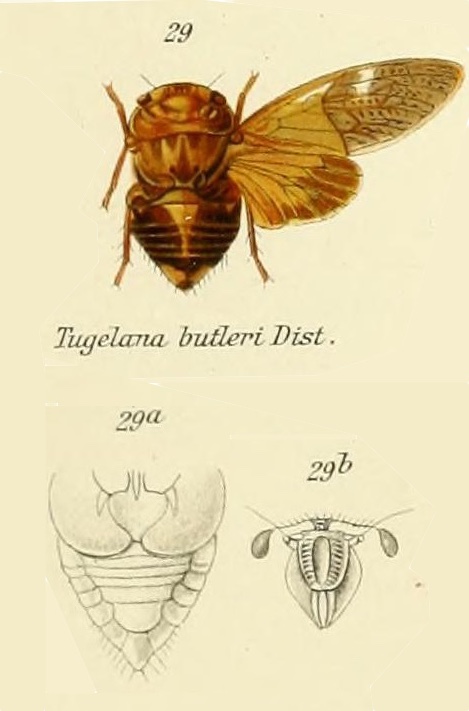
Tugelana genus description by W. L. Distant:
Characters. — Head short and broad, including eyes about as broad as base of mesonotum, between eyes three times as broad as long, ocelli farther apart from eyes than from each other, eyes obliquely directed backward; face a little longer than broad, very broadly longitudinally sulcate. lateral areas transversely striate ; pronotum almost as long as mesonotum, the lateral margins roundly ampliate, twice as broad at base as long, the fissures profound, anterior margin truncate, posterior margin very slightly sinuate at middle; abdomen in male about as long as space between the apex of head and base of cruciform elevation; tympana partly exposed, the coverings being a little shorter and considerably narrower inwardly; rostrum reaching the posterior cocÅ“; opercula in male scarcely extending beyond base of abdomen, not meeting inwardly, obliquely transverse, laterally and apically rounded; anterior femora incrassated, with two short but broad teeth at apex; tegmina more than twice as long as broad, opaque, basal cell slightly longer than broad, ulnar areas moderately elongate, apical areas eight, the uppermost long’and narrow; wings a little more than half the length of tegmina, apical areas six. This is one of the few Ethiopian genera belonging to the subfamily Gseaninas, and may be placed near the genus Hamza; like that genus, apart from the tympanal structural characters, it has a superficial resemblance to the genus Platypleura.
References:
- The illustration and description comes from the journal Genera Insectorum, and a specific article from 1914 by W. L. Distant titled Homoptera. Fam. Cicadidae, Subfam, Gaeaninae. Read it on the Biodiversity Heritage Library website.
- Species name verification comes from Allen Sanborn’s Catalogue of the Cicadoidea (Hemiptera: Auchenorrhyncha).
